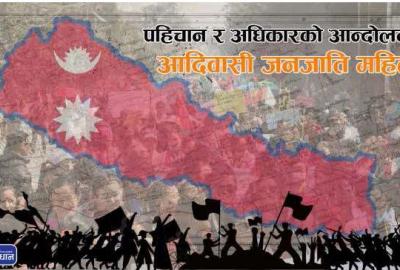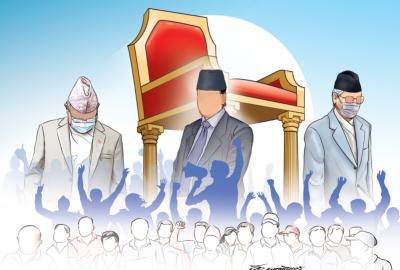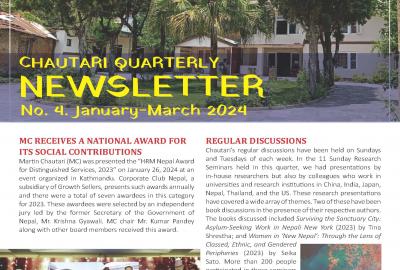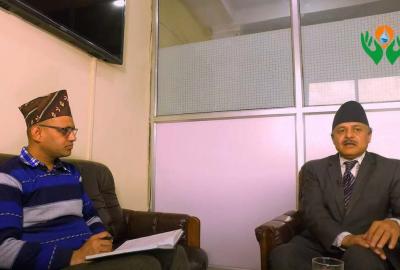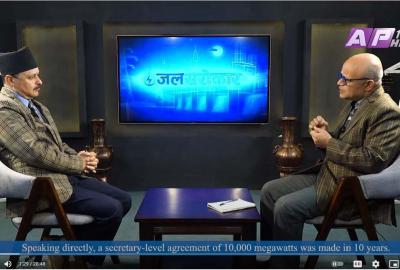Sep 11, 2015- Information and Communication Technology (ICT) has received significant attention since it was posited as an important instrument for achieving the Millennium Development Goals. Specifically, the goal to develop a global partnership for development (Goal 8) and Target 8.F asks governments to increase the availability of new technologies such as the internet, personal computer and mobile phones.
In Nepal, ICT has been portrayed as a magic wand in documents such as the Information Technology Policy, E-Government Master Plan, and National Information Technology Roadmap. These documents place an unquestionable faith on and pledge huge resources to what is a poorly understood loose correlation between welfare and the existence of ICT. Without large scale studies on the size of the ICT economy, these documents rely on borrowed vague buzzwords like ‘Knowledge-based society/economy’, ‘Information-based society’ and ‘Digital Nepal’ to describe a society we are supposed to aspire towards. Thereby, the debate on the urgent needs of the poor and the marginalised on the one hand, and the complexity and expense of the envisaged large-scale infrastructure development on the other is bound to escalate. And there are the technological bottlenecks. The astronomical energy supply and new infrastructure needed to power a ‘Digital Nepal’ has been conveniently missing from the discourse.
Massive energy consumption
The discourse on the energy implications of an internet-connected Nepal should have been loud and clear given the enormity of the bottleneck. But one reason for the absence of such a dicussion among the general public is because the major components of ICT are hidden from view, presenting a convoluted narrative. For a general user, ICT is synonymous to the user-end devices such as laptops and mobile phones. Energy guzzlers such as data centers, mobile switching centers, ICT equipments (routers, amplifiers) and base transceiver station do not figure in the layman’s ICT vocabulary. However, it is astonishing that an overarching policy document like the ICT policy did not demand a detailed energy audit beforehand.
The energy footprint of the ICT sector is huge. According to Mark P. Mills, Chief Executive Officer (CEO) of Digital Power Group, the total energy consumed while viewing a YouTube video for seven hours is sufficient to run two refrigerators for a year. This might sound strange at first. But the request for a video travels through hundreds/thousands of kilometers of cable, hopping between many servers and in and out of network devices. Telecom Italia, an Italian telecommunications company, alone consumes 25 percent of the total annual hydropower production in Nepal. This should come as a shock to many simply because of our ignorance regarding the hidden units, wires and devices. Unfortunately, the energy footprint of the Nepali ICT sector remains unknown. Our recent research finds that the energy consumed by the Nepali telecommunications in the last 15 years is quickly catching up with the transportation sector. Even in its infancy, the energy requirement of the Nepali ICT sector is following the footsteps of the big players.
Slowdown has begun
The faith in ICT comes from the findings of the developed countries. There has been a noticeable decrease in the overall national energy consumption due to saving in industries after their integration with ICT. But a similar phenomenon is highly improbable for Nepal. First, the energy demand of the Nepali industrial sector is less than five percent of the total national energy demand. About 90 percent of the national energy is used for household purposes. Second, only three percent of the national energy demand is fulfilled by electricity. We still rely on firewood to meet 78 percent of our total energy needs. Ensuring energy efficiency by coupling industries and ICT is, therefore, simply not applicable in the current Nepali scenario.
While ICT devices are getting smaller and becoming more energy efficient, such efficiency has largely been negated by the appetite of the consumers for high-bandwidth and high-performance content. The internet is a classic example. Once it was synonymous with e-mails which could be delivered through the humble fixed telephone lines. Streaming videos, high-resolution images and audio-visual social communication define the present day high-bandwidth power hungry internet. According to Jonathan Koomey, a foremost authority on electricity consumption of the internet, the energy requirement of powerful computers used in data centers of organisations like Google is doubling annually. The self-efficiency in semiconductor technologies cannot increase indefinitely due to the constraints of natural laws. Brian Krzanich, CEO of Intel, mentions that the size of modern processors can no longer be reduced at the blinding pace we have been accustomed to in the last three decades. Chip manufacturers are unlikely to spend money in groundbreaking research and development when the returns start to diminish. According to him, the slowdown has started and the halt is near.
Uncertainties ahead
We have not heard much about where the energy required to power a ‘Digital Nepal’ will come from. Firewood cannot produce high quality electrical energy required for ICT. Petroleum-based generators could be an alternative but they come at a huge econmic and environmental cost. Nowadays, there is a hullabaloo of clean, green, and alternative energy. According to Lorenz Hilty from Zurich University, such unconventional methods of energy production cannot fulfil the rapidly doubling energy trends of the ICT sector. It will fail due to the rebound-effect: when things are affordable, people start to use more of it.
Policies that simply push for ICT diffusion and hope that this will miraculously advance energy efficiency risk resulting in the net increase of energy consumption. Furthermore, the energy consumption of the ICT sector and the efficiency that can be derived through its use has to be studied as a single dynamic entity. Without concretely addressing the energy bottleneck ‘Digital Nepal’ will only be a mess of wires. It would be similar to the network of pipes, without running water, laid down by the Kathmandu Upatyaka Khanepani Limited.
Pandey and Regmi are researchers affiliated to Martin Chautari
Source: The Kathmandu Post, 11 September 2015, P. 7.
http://kathmandupost.ekantipur.com/news/2015-09-11/the-efficiency-dilemma.html
